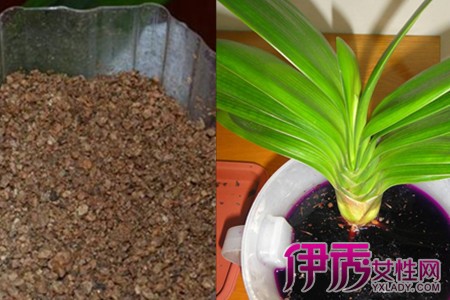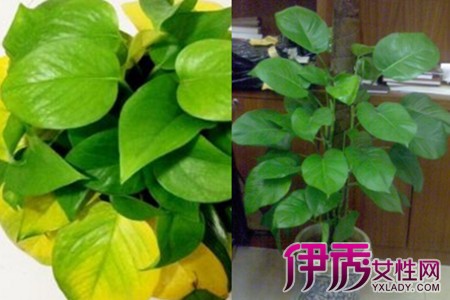How to deal with the rotten root of the gentleman orchid? the little trick can be solved easily.

Gentleman orchid prefer some slightly sour soil, the best soil is sand soil and some humus soil with some pine leaves to mix, with river sand soil with furnace ash plus some rotten leaf soil mixture is also better. If the soil permeability is good when planting, and the cultivation materials should be disinfected and sterilized before use, the magnolia will have less disease.
Some flower friends will give the orchid some beer to supplement nutrition, it should be noted that the gentleman orchid beer should be watered with water once a week.
Usually do not always watering, if watering too often the water in the flowerpot can not be discharged out of the pot, resulting in stagnant water in the pot to soak the flower roots. After the flower root is rotten, the leaves of Cymbidium will turn yellow and appear some small markings and so on. At this time, it needs to be dealt with in time, if the leaves will fall off.
Usually to water the orchid to find that the soil in the flowerpot is dry and re-watered, it is best to use a small spray pot to water the flowers, but not from the leaf core to prevent the core from rotting.
Cymbidium leaf spot caused by rotten roots should be sprayed with carbendazim in time, or you can use some medicine mixed with water to apply to the diseased part. Usually, when you fertilize the orchid, you must send the fertilizer well. if the fertilizer is not mature, the orchid will have rotten roots and leaf spots.
After the root of the gentleman orchid is rotten, the potted soil should be changed in time, and the potted soil should be carefully removed. Soak in potassium permanganate water for 60 minutes, then put a layer of grass ash on it for a day and then replant it in the new soil. Usually do not put it in a high temperature environment to grow, at noon the sun is too strong need to put in a ventilated place to breed.
What about the rotten roots of Cymbidium? how to deal with the rotten roots?
Gentleman orchid is one of the most common indoor flowers, part of the reason is that its appearance is relatively elegant, put indoors not only has a decorative role, but also brings some green visual enjoyment, decoration home is the most suitable. Another part of the reason is the moral of the gentleman orchid, the gentleman noble can not be bullied, even in modern society, there are many people to symbolize their own character, compared with some flowers and plants, gentleman orchid appears elegant and elegant. But in the daily breeding process, the magnolia often has some rotten roots, which looks very uncomfortable. So what about the rotten roots of the gentleman orchid? The answers are all below.
What about the rotten roots of Cymbidium? how to deal with the rotten roots?
1. In general, because the overall growth conditions of Cymbidium are relatively common, and they also belong to a kind of plant with strong vitality, unless there are some relatively big mistakes in the process of breeding, such as too much water, it may lead to rotten roots and affect the growth of Cymbidium. Generally, as long as you master the corresponding culture methods, you can reasonably avoid this situation.
2. But if there is really a situation where the rotten roots of Cymbidium can't be remedied, of course not, we have already said that Cymbidium is a kind of plant with strong vitality. So even if there is a rotten root situation, there are ways to remedy, so that a life will not be wasted, we can continue to breed and enjoy the beauty brought to us by the gentleman orchid.
3. The remedy for the rotting roots of Cymbidium is to pour out the whole orchid, then wash away the soil from the root, and then remove the rotting roots. Dry the water in the sun, soften the langen slightly, take the new soil and put it back on the basin, pour enough water, and put it in a cool place. The soil here we should pay special attention to the use of dry soil, wet soil not only can not save the gentleman orchid, but also may aggravate the rotten roots.
[orchid rotten root] how to deal with the rotten root of Cymbidium
Cymbidium is very easy to breed, but the phenomenon of rotten roots also exists. I believe many flower lovers who breed Cymbidium have encountered it. Below, the phenomenon of rotten roots is analyzed from several aspects, such as excessive watering, high temperature, excessive fertilization, indoor airlessness, and so on. The specific analysis is as follows:
Analysis on the causes of rotten roots of Cymbidium 1. Rotting roots of Cymbidium: the temperature is too high
High temperature, high humidity and poor ventilation make the fleshy root of the plant rotten easily.
2. Rotten roots of Cymbidium: too much watering
Large watering, high water content of nutritious soil, poor air permeability, long-term soaking of roots by water, resulting in discoloration and decay of roots.
3. Rotten roots of Cymbidium: large amount of fertilizer
The amount of fertilizer applied is large, and the fertilizer in the nutritious soil is not fully fermented, resulting in rotting roots caused by heating and burning roots, improper fertilization during the growing period, excessive fertilizer application, resulting in fertilizer contact with the roots, resulting in root burning, affecting root absorption capacity, and root tissue is destroyed and rotten roots. Attention should be paid to the diligent application of thin fertilizer.
4. Rotten root of gentleman orchid: root injury
When the root is injured, when changing the basin or dividing the basin, the rotten fleshy root must be completely eliminated, then coated with charcoal or fine furnace ash to dry, and then cultivated in the basin to prevent the injured root from coming into direct contact with nutritious soil bacteria.
5. Rotten roots of Cymbidium: poor indoor ventilation
Poor air permeability, the use of porcelain pots, plastic pots, etc., lead to basin soil air permeability, water permeability is not good and rotten roots.
6. The rotten roots of Cymbidium: the soil is not good.
The soil is not good, and some bacterial diseases erode the fleshy roots, resulting in fester.
How to deal with the rotten roots of Cymbidium? 1. How to deal with the rotten roots in a small area?
A, immediately knock the rotten root out of the basin, remove the attached soil, rinse the root system with clean water, and then cut off the rotten root with a sterilized blade.
B, soak for 20 minutes with potassium permanganate solution or fungicide solution such as carbendazim, and then remove the dry wound.
C, prepare the cultivated soil again, and carry on the disinfection, wait for the gentleman orchid's basic wound to dry, a few are planted into the new cultivated soil.
D, replanted gentleman orchid, should be in the basin mouth cover transparent plastic bag, put in the half-shade place, keep the basin soil slightly moist, do not water more. 2 ‰ potassium dihydrogen phosphate solution was sprayed on the leaves every 5-7 days to increase nutrients and promote rooting. After two or three weeks of maintenance, new roots can grow, then take off the plastic bags, and gradually transition to normal maintenance.
2. How to deal with the rotten roots in a large area of Cymbidium
The treatment of all or most of the rotting roots of Cymbidium:
A, rinse the base of the stem with water first, then cut off the rotten part laterally with a sharp blade, and pay attention to cutting it as smooth as possible.
B, immediately after resection, smear sulfur powder or charcoal powder on the incision to prevent wound infection. And put it in a cool and ventilated place to dry the wound. And cut off most of the leaves to reduce transpiration.
C, wait for the incision surface to dry and then plant in the plain sand, water once after two days, and then keep the basin soil warm and moist, avoid fertilization. Under the temperature of 20-25 degrees, there are new roots around the incision about half a month later. After two months, it can be transplanted into the new culture soil basin, and gradually transferred to normal maintenance.
- Prev

Understand why green pineapple leaves turn yellow to keep domestic plants away from unhealthy conditions.
Green pineapple is a very popular plant in recent years, because it is not only green and pleasing to the eye, but also purifies the air. But some people find that the green apple leaves in their homes are always yellow and want to know what's going on.
- Next

Field management of cinnamon
Field management of cinnamon
Related
- Fuxing push coffee new agricultural production and marketing class: lack of small-scale processing plants
- Jujube rice field leisure farm deep ploughing Yilan for five years to create a space for organic food and play
- Nongyu Farm-A trial of organic papaya for brave women with advanced technology
- Four points for attention in the prevention and control of diseases and insect pests of edible fungi
- How to add nutrient solution to Edible Fungi
- Is there any good way to control edible fungus mites?
- Open Inoculation Technology of Edible Fungi
- Is there any clever way to use fertilizer for edible fungus in winter?
- What agents are used to kill the pathogens of edible fungi in the mushroom shed?
- Rapid drying of Edible Fungi

